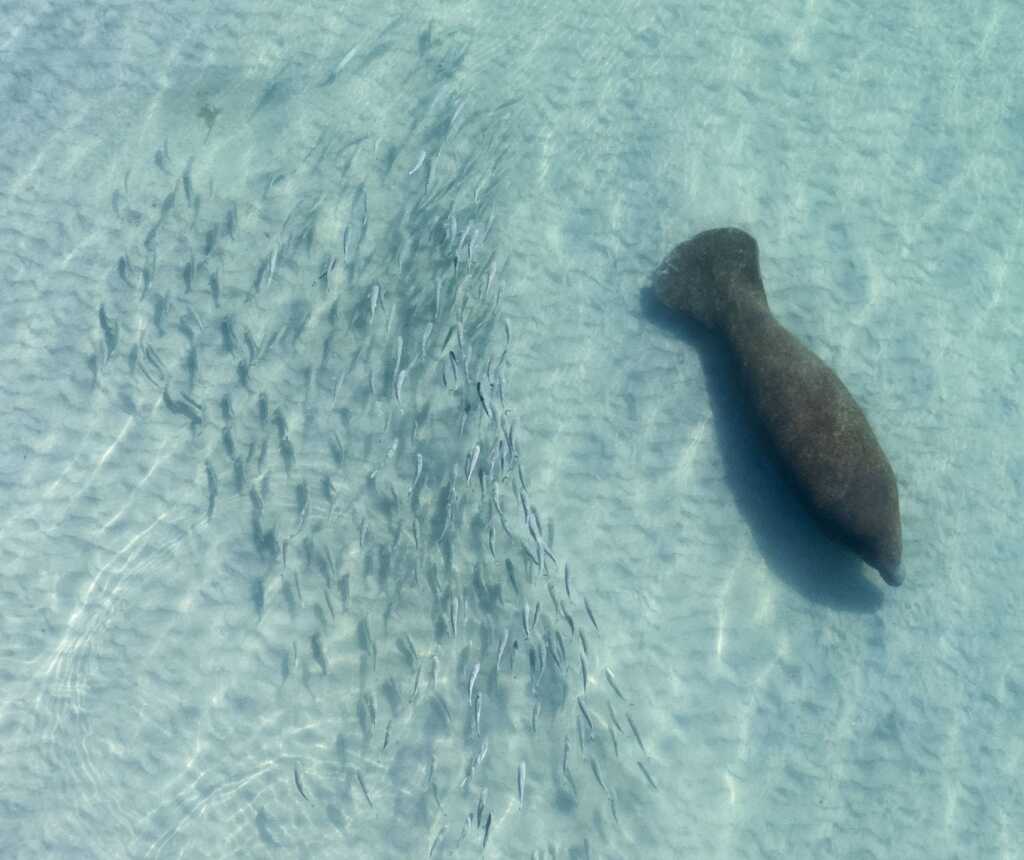Manatee deaths slowing, but could Lake O discharges change that?
Manatee deaths slowing, but could Lake O discharges change that?

First the good news: The record pace of manatee deaths in Florida has slowed.
Two years ago Florida saw a record 1,100 manatee deaths. The primary cause of this “unusual mortality event” was starvation due to the loss of seagrass — itself caused by poor water quality and algal blooms that blocked the sunlight. State officials began feeding romaine lettuce to the manatees; and in 2022 the number of dead sea cows declined to 800.
The 1,900 dead over two years accounted for as much as 20% of the total manatee population.
But through June 16 of this year, “only” 332 manatees have died. At the current pace, some 670 or so manatee deaths would be recorded this year, the lowest figure since 2020.
But could discharges from Lake Okeechobee reverse this trend?
As of this writing the lake stands at 14.59 feet. Blue-green algae covers some 420 square miles of the lake’s surface. The St. Lucie estuary is not yet getting discharges; the Caloosahatchee is getting up to 5,000 cubic feet of water per second, though it’s all local basin runoff at this point. That is subject to change if the rain keeps falling and the lake continues to rise.
Even without water from the lake, blue-green algae is spreading across Lee County.
That’s not good news for the sea cows (or anyone else, for that matter).
To be sure, Lake O discharges did not cause the “unusual mortality event” of the past few years. Most manatee deaths during that span were recorded in Brevard County, where discharges have little direct effect.
But VoteWater (and our predecessor Bullsugar.org) and other conservation groups have long argued that discharges from Lake O impact the health of not just manatees but sea turtles and other marine life. Algal blooms triggered by discharges have killed off seagrasses in the St. Lucie and Caloosahatchee, eliminating a food source for manatees that then have to seek sustenance elsewhere.
Moreover, recent studies show nutrient-laden freshwater discharges from Lake O can feed red tide. In the wake of Hurricane Ian, red tide blooms have plagued much of Florida’s gulf coast, and they’re being blamed for the fact that 86 of the 332 manatee deaths recorded so far this year — one in four — have occurred in Lee County, where the Caloosahatchee (and Lake O discharges, when they occur) empty into the Gulf.
Just this week in Pinellas County, deputies jumped into the water to save a manatee that was struggling to breathe due to red tide.
Discharges may contribute to manatee mortality in another way.
A 2021 study found more than half of the Florida manatees sampled are chronically exposed to glyphosate, an herbicide used to kill weeds and “ripen” sugarcane. Discharges from Lake Okeechobee containing glyphosate have resulted in higher concentrations of glyphosate in the Caloosahatchee and St. Lucie rivers, according to the study.
Bottom line: Even as the “ongoing mortality event” appears to be easing, Lake O discharges to the Caloosahatchee and St. Lucie could help reverse that positive trend. And we need to keep up the fight to prevent that from happening.
Recent legislation — Senate Bill 1379, which establishes the “Indian River Lagoon Protection Program” and implements new restrictions on septic systems — could help, but any significant improvement is years away.
The new Lake Okeechobee System Operating Manual (LOSOM), once implemented, may help minimize discharges. But LOSOM is on hold as the National Marine Fisheries Service studies the plan; the agency is worried discharges could harm sea turtles. Just as it might harm manatees.
We need to do more. We must continue to focus on attacking pollution at its source. Above all, excess water from Lake Okeechobee must go south, where it can be cleaned and sent to the Everglades. And if the system can’t handle that, we need to upgrade the system, with more storage earmarked specifically for lake water, not water for irrigation.
We’ve got a lot of ground to make up if we’re going to save the manatees — and ultimately, ourselves.


